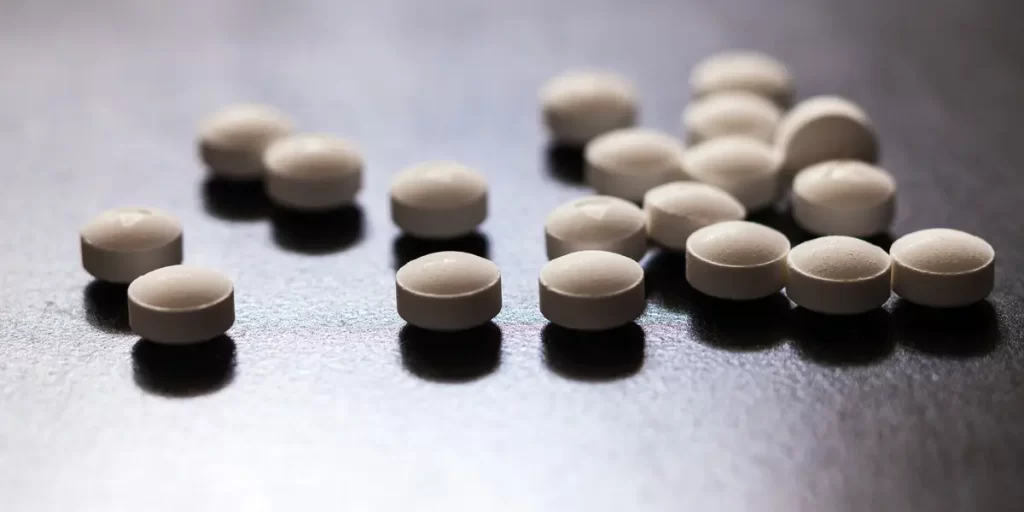Opioid Withdrawal and Detox
Written by Thomas Christiansen
& Medically Reviewed by Dr. Deep Shukla, PhD, MS
Medically Reviewed
Up to Date
Last Updated - 6/17/2022
View our editorial policy
Prolonged use of opioids can lead to the development of a physical dependence on the drug. A physical dependence on opioids involves changes in the brain that make regular use of the drug necessary to function normally. In such cases, discontinuation or even lowering the dosage of opioids can lead to adverse withdrawal symptoms. Although the symptoms of opioid withdrawal are generally not life-threatening, these symptoms can be very difficult to cope with and can cause a setback in sobriety. Treatment at a medical detox facility can help an individual cope with symptoms of opioid withdrawal.
Opioid Withdrawal Symptoms
Prolonged use of opioids and their subsequent discontinuation can lead to opioid withdrawal symptoms. The symptoms of opioid withdrawal are generally not life-threatening but can be uncomfortable. Opioids have sedative and relaxing effects that are produced in part by its action on the brainstem nucleus, which is involved in promoting wakefulness and arousal. Opioids inhibit the activity of this brain region. Repeated use of opioids leads to adaptations in the locus coeruleus along with other brain regions.
Discontinuation of opioid use is associated with increased activity in the locus coeruleus that results in withdrawal symptoms involving excessive arousal such as anxiety, nausea, increased heart rate, and body temperature.
Some of the symptoms of opioid withdrawal also include:
- Nausea
- Vomiting
- Diarrhea
- Muscle and bone pain
- Insomnia and sleep disturbances
- Excessive sweating
- Weight loss
- Cold or hot flashes
- Goosebumps
- Anxiety
- Depression
- Irritability
- Watery discharge from eyes or nose
- Tremors
- Abdominal cramps
- Increased heart rate and blood pressure
- Elevated body temperature
Most of these symptoms are observed during the initial two to four weeks after discontinuation of drug use and then disappear. However, some of the symptoms are observed weeks or even months after this initial phase and are known as post-acute withdrawal symptoms. These symptoms include anxiety, irritability, depression and sleep disturbances.
Clinical Opioid Withdrawal Scale
The Clinical Opioid Withdrawal Scale (COWS) is an assessment commonly used by clinicians to determine the severity of symptoms of opioid withdrawal. The COWS consists of 11 typical symptoms of opioid withdrawal and allows clinicians to monitor the severity of symptoms. The 11 items are individually scored and the total score is used to assess the severity of withdrawal symptoms.
Opioid Withdrawal Timeline
The onset and duration of the symptoms of opioid withdrawal tend to vary according to the half-life of the opioid being used. Dependence on short-acting opioids (shorter half-life), such as heroin or oxycodone, results in withdrawal symptoms that appear after 8 to 24 hours after discontinuation of drug use and last for 4 to 10 days. The withdrawal symptoms of long-acting opioids like methadone appear after 12 to 48 hours and span a duration of 10 to 20 days. Some of the symptoms of opioid withdrawal last beyond this initial acute phase and include symptoms such as anxiety, depression and sleep disturbances. This post-acute withdrawal phase may last for weeks or months.
Dangers Of Opioid Withdrawal
In most cases, the symptoms of opioid withdrawal are not life-threatening but are extremely uncomfortable. However, in some rare cases, the symptoms of opioid withdrawal can be fatal. The symptoms of opioid withdrawal may involve diarrhea, vomiting and sweating that can lead to excessive water loss and hypernatremia (elevated blood sodium levels). Hypernatremia can lead to various complications such as brain hemorrhage or heart failure and cause death. Such fatal cases are rare but the symptoms of opioid withdrawal are very difficult to cope with and often lead to a setback in sobriety.
Opioid Detox
The symptoms of opioid withdrawal are described as those of a very bad flu. Detoxification involves the elimination of opioids from the body and the careful management of the withdrawal symptoms that arise due to abstinence from the opioid intake.
Detoxification from opioids may be undertaken at an inpatient detox facility due to the severity of withdrawal symptoms. Undergoing withdrawal from opioids at home is generally not advisable and should be undertaken only with the help of a medical professional. Medically supervised detoxification generally involves the use of protocols that include careful monitoring of the severity of withdrawal symptoms using the clinical opioid withdrawal scale and administration of medications for the emergent symptoms.
Medically Assisted Detox
A medically assisted detox program involves around-the-clock medical supervision to help the individual cope with opioid withdrawal symptoms in a safe and supportive environment.
Treatment at a medical detox facility may involve the use of other opioids such as methadone or buprenorphine to reduce the severity of withdrawal symptoms and cravings. Alternatively, the dose of the opioid being used may be tapered gradually to make the withdrawal symptoms more manageable. Medications may then be used to treat the symptoms as they arise and may involve the anti-hypertensive drug clonidine.
Clonidine or the related medication lofexidine are useful in alleviating symptoms that arise due to the increased arousal caused by the activation of the norepinephrine neurons in the locus coeruleus. Clonidine can be effective in reducing the severity of symptoms of increased heart rate and blood pressure, nausea, vomiting, anxiety. NSAIDs may be used for relieving muscle pain, whereas loperamide may be used for diarrhea.
Tapering Off Opioids
Abrupt discontinuation of opioid use can lead to extremely unpleasant withdrawal symptoms. To avoid such symptoms, the dose of opioids is generally gradually lowered. Tapering off opioids involves gradually reducing the dose of the opioid being used in a pre-planned fashion. This process involves following a taper schedule whereby the dose of the opioid is reduced by a specific amount (5% to 10%) at regular intervals (every two to four weeks). The taper schedule is tailored according to the severity of dependence on opioids and a more gradual taper is preferred in the case of severe dependence.
Finding an Opioid Detox Center in Washington and Oregon
Prolonged use of opioids can lead to the development of a dependence on these drugs. The symptoms of opioid withdrawal can be severe and treatment at an inpatient program is generally necessary. Choosing the right detox center can be difficult due to many facilities offering similar treatments. While selecting a detox for opioid withdrawal, one must ensure that the detox facility provides evidence-based treatment that is tailored according to the needs of the individual. Furthermore, treatment at the detox center must be provided by trained and experienced medical professionals.
The Recovery Village Ridgefield provides quality care and treatment for opioid dependence and addiction. Our Vancouver detox center is a great option for people living in Washington or Oregon, or those who may wish to travel out of state for treatment. If you or a loved one struggle with opioids, contact The Recovery Village Ridgefield to learn more about our treatment programs.

The Recovery Village Ridgefield Detox Center
5114 NE 94th Ave Vancouver, WA 98662 (866) 419-2986
Sources
World Health Organization. “Clinical Guidelines for Withdrawal Management and Treatment of Drug Dependence in Closed Settings.” 2009. Accessed October 12, 2019.
Kleber, Herbert D. “Pharmacologic treatments for opioid dependence: detoxification and maintenance options.” Dialogues in Clinical Neuroscience, December 2007. Accessed October 12, 2019.
View Sources
World Health Organization. “Clinical Guidelines for Withdrawal Management and Treatment of Drug Dependence in Closed Settings.” 2009. Accessed October 12, 2019.
Kleber, Herbert D. “Pharmacologic treatments for opioid dependence: detoxification and maintenance options.” Dialogues in Clinical Neuroscience, December 2007. Accessed October 12, 2019.
Authorship






